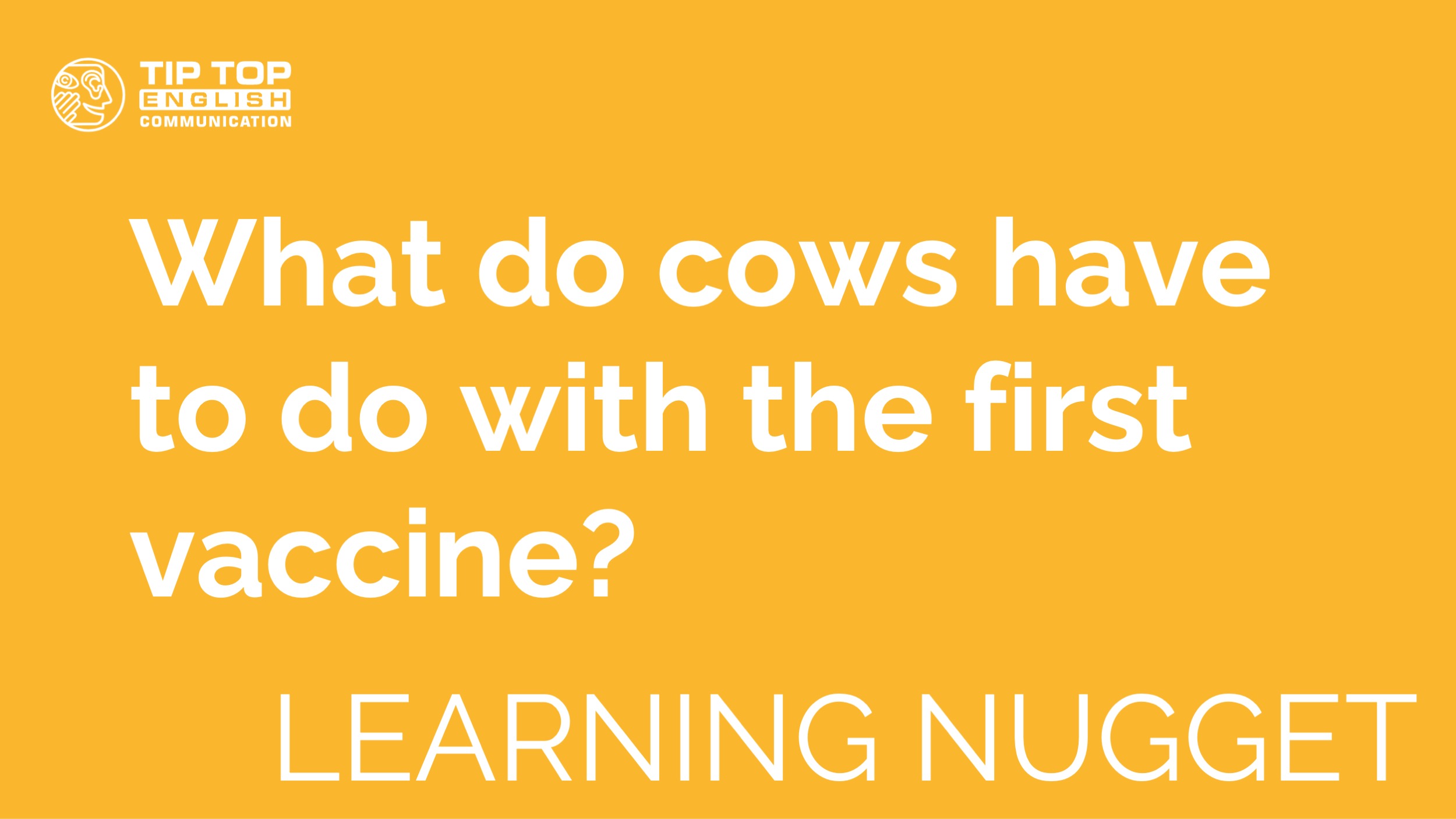What do cows have to do with the first vaccine?
First and foremost, we hope this month’s Learning Nugget finds you safe and well.
Countries’ responses to the virus that causes COVID-19 have had a very sudden and enormous impact on economies and daily lives across the world. It’s hard to tell when things will get back to something like normal, but it’s certain that one thing would make that process move much more quickly: a vaccine.
With vaccines being such a hot topic right now, we became interested in where the idea for them came from in the first place. Read on to learn what we found out. It’s a story set in 1700s England that involves a man named Edward Jenner, a dairymaid, and cows.
How Edward Jenner changed the world
Born in 1749, Edward Jenner loved nature and science from a very young age. Those interests led him, at the age of 13, to apprentice under a surgeon who worked in the countryside near Bristol, England. It’s reported that it was during this time travelling to farms with the surgeon that he heard an interesting country belief. It was said that dairymaids who had caught cowpox – a disease that could be passed from cows to humans – never caught smallpox.
The reason this was significant is that smallpox was a disease that had ravaged society for centuries, killing commoners and royalty alike. Roughly one out of every three people who caught it died, and the survivors were left with lifelong scars covering their entire bodies. Cowpox, on the other hand, was almost never fatal and didn’t appear all over the infected person’s body.
This all meant that if the stories were true, there was a relatively low-risk way that people could become immune to an extremely deadly disease.
Of course, Jenner didn’t act on these stories immediately. He had a lot to learn and experience before he would do the experiment that would eventually change the world. Over the next three decades, he studied medicine under a renowned surgeon in London, published papers on various scientific and medical topics, and started his own medical practice.
It was in May 1796 that Jenner carried out his experiment using human subjects in a way that will make most modern-day people cringe. Jenner took pus from a dairymaid’s cowpox pustule and put it in a small cut he made on an eight-year-old boy’s arm.
The boy faced some symptoms of sickness but quickly recovered. After two months, Jenner introduced fresh smallpox material to the boy’s system. And, as Jenner had hoped, the boy showed no smallpox symptoms.
For language people like us here at TIP TOP, it’s interesting to note that Jenner created the word “vaccine” for his procedure from the Latin word for cow: vacca.
Jenner published an article on his “vaccine” and began advocating for its widespread use, but it took years before people first started to trust and use the procedure. Once they did, though, it quickly became popular throughout Europe and the United States.
Amazingly, Jenner never sought to make money from his discovery. He only benefitted financially from it because the British government decided of its own accord to give him large sums of money in thanks for his momentous achievement. At his home, he even had a special house built where he vaccinated those in need for free.
Jenner’s method was modified and modernized as time went on, but the principles behind it led to vaccines for other diseases like polio. In 1977, the World Health Organization declared that smallpox had been eradicated worldwide.
Looking ahead
As we wait for both a vaccine and more effective treatments for the virus behind the global pandemic to be created, we can look to Jenner’s story to remember how it takes the ingenuity and intelligence of just one person to change things for the entire world. All of us at TIP TOP hope you stay healthy and happy as we walk the slow path back to normalcy.
We also want to mention that for anyone interested in continuing their English learning, we have a wealth of online classes available. To promote learning and a chance for responsible socialization during the pandemic, we’re also offering heavily reduced prices on classes for any classes booked until Easter Monday, April 13. Learn more at https://englischtraining.online.
And of course, the entire TIP TOP Team wishes you a fantastic Easter holiday!
Vocabulary
first and foremost – vor allem, in erster Linie
impact on – Auswirkung auf
a vaccine – ein Impfstoff
a dairymaid – Milchmädchen, Senner
led to apprentice –führte zu einer Ausbildung (lead-led-led)
surgeon – Chirurg
Catch cowpox – sich Kuhpocken einfangen
pass from…to – übertragen von … zu
a disease – eine Krankheit
ravage society for centuries – Gesellschaft ist seit Jahrzehnten gekennzeichnet von
roughly – ungefähr
X out of … – x von …
lifelong scars – lebenslange Narben davontragen
fatal – tödlich
do the experiment – ein Experiment durchführen
eventually change – schließlich verändern
three decades – 30 Jahre
renowned – bekannt
medical practice – Arztpraxis
to cringe – schaudern
pus postule – Eiterpustel
quickly recovered – sich schnell erholen
begin advocating for its widespread use – beginnen sich für seine weitverbreitete Anwendung einzusetzen
momentous achievement – bedeutsame Errungenschaft
eradicate – ausrotten
effective treatments for – effective Behandlungen gegen
pandemic – Pandemie
back to normalcy – zurück zur Normaliät
a wealth of online classes available – eine Fülle von Onlinetrainings zur Verfügung
responsible socialization during the pandemic – verantwortungsvolles soziales Verhalten während der Pandemie
Excite Your Senses

On our YouTube channel, you can follow along as a native speaker reads this month’s Learning Nugget accompanied by music and pictures.
